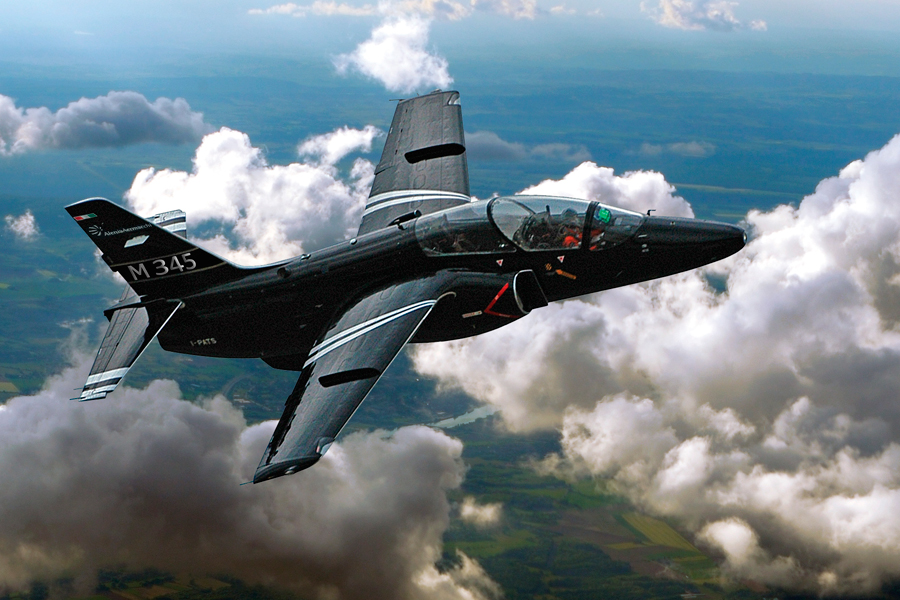
Rome, 30 December 2016 – The prototype of the new Aermacchi M-345HET (High Efficiency Trainer) two-seat basic jet trainer has successfully completed its first flight from Venegono Superiore airfield (Varese, Italy) on December 29. The aircraft was flown by Quirino Bucci and Giacomo Iannelli from Leonardo Aircraft Division.
Quirino Bucci, Project Test Pilot Trainers of Leonardo Aircraft Division, expressed great satisfaction at the end of the 30 minute flight and said: “The aircraft conducted itself perfectly, meeting the expectations of the design parameters while showing excellent performance. The engine in particular demonstrated a great capacity to react to regime changes, which is a fundamental characteristic for a basic training aircraft.”
The M-345 is the latest-generation aircraft from Leonardo for military pilot training and provides global Air Forces with an economically affordable and effective solution, thanks to a significant reduction in acquisition and life-cycle costs compared to those of powerful turboprop trainer aircraft. The test campaign will be completed within 2017. The next tests will check the advanced avionics systems, the engine and the flight envelope expansion, including altitude, speed and manoeuvrability.
Note to Editors:
Thanks to its modern avionics, considerable external load-carrying capability on the wing pylons and performance, the M-345HET is also suited for operational roles. Life cycle cost reduction is driven by long fatigue and two-level maintenance, the latter made possible by replacing the expensive general overhauls with the airframe and systems Health and Usage Monitoring System (HUMS). The avionics, based on the latest M-346’s experience, matches the standards of the latest combat jets, including HOTAS (Hands On Throttle And Stick) controls, Head up Display (HUD), Multi-Function Displays (MFD), the real-time data link. The aircraft is powered by a Williams FJ44-4M-34 turbofan engine with thrust of 1,540 kg (3,450 lbs). The operating efficiency is ensured by pressure refuelling systems and on-board oxygen generation (OBOGS), both of which reduce ground support crews and ground operation times.
M-345HET
Dimension
Wing span 8,47 m (27.78 ft)
Length 9.85 m (32.32 ft)
Height 3.74 m (12.27 ft)
Wing area 12.6 sqm (135.6 sqft)
Weights
Take-off (Trainer) 3,300 kg (7,275 lb)
Take-off (maximum) 4,500 kg (9,920 lb)
Power plant
Engine, turbofan Williams FJ44-4M-34
Maximum Thrust 1,540 kg (3,400lb)
Internal fuel 700 kg (1,545 lb)
Performance (Clean, ISA)
Max level speed (SL/20 kft) 380/420 KTAS
Limited Speed 400 KEAS / 0.8 MN
Stall speed (landing, 20% fuel) 88 KCSA
Rate of climb (SL) 5,200 ft/min
Service ceiling 40,000 ft
Take-off / Landing ground run (SL) 520 m (1,720 ft)
Ferry range 760 nm (1.410 km)
(clean / 2 ext. thanks – 10% reserve) 1,000 nm (1.850 km)
Commentaires